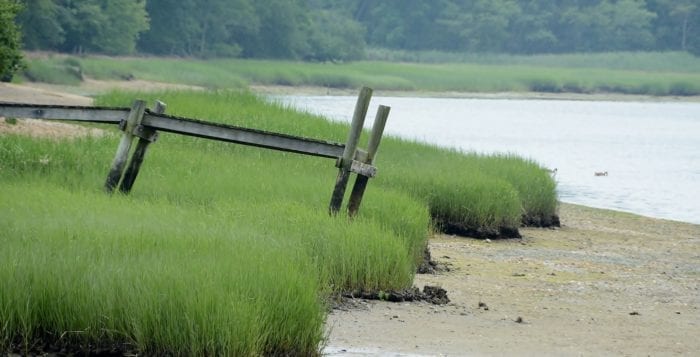The Gyrodyne Project Threatens Stony Brook Harbor
By Steve Englebright

During this peak of summer, Stony Brook Harbor and its interconnected waterways are at their delightful aquatic best. Sadly, in future summer seasons the harbor’s pristine marine waters may also be at their most vulnerable due to a threat not from nature, but from intensive commercial development.
As part of a light-industrial subdivision proposal filed with the Town of Smithtown in August 2017, the Gyrodyne company wants to build a regional sewage treatment plant on its property. Some suggest grafting the entire St. James’ business district onto Gyrodyne’s proposed new sewage treatment plant While this may spur a building boom that could remake bucolic St. James into yet another commercial strip, there is no doubt that sewage effluent from the combined overdevelopment projects now being considered for St. James will devastate nearby Stony Brook Harbor.
A former commercial nursery turned helicopter manufacturing plant turned real estate investment trust, the property’s antiquated zoning contrasts with the historic state highway called Route 25A and the beautiful communities adjoining it, reflecting 300 years of history. Built to service the needs of the development’s planned occupants, including medical practices and assisted-living facilities, the plant would discharge upward of 180,000 gallons of lightly-treated medical and commercial effluent daily into the permeable glacial soils that drain directly into the harbor. The contaminants would travel about 8,000 feet to reach Stony Brook Harbor’s shoreline.
This groundwater-transported effluent will contain unhealthy amounts of nitrogen in liquid that is treated sewage waste. Once this reaches the harbor it will change its ecology and recreational appeal forever.
Professor Lawrence Swanson, of the School of Marine and Atmospheric Sciences at Stony Brook University, who has studied Stony Brook Harbor’s ecology for decades recently stated that the Gyrodyne sewer project is “one of the biggest menaces right now to preserving clean water in Suffolk County. Stony Brook Harbor is probably the cleanest and least disturbed harbor we have left on Long Island.”
In addition to processing human waste, the proposed plant will act as a pass-through for a significant volume of contaminants flushed out of the medical offices and assisted living facilities Gyrodyne is proposing. Unfortunately, this sewer plant is not designed to remove anything other than nitrate nitrogen. Most of the other chemicals will reach and contaminate the harbor.
The list of possible contaminants is long and worrisome. A short list includes radioactive imaging compounds; substances used in routine nuclear-medicine functions; pharmaceutically-laden human waste; and such legacy toxins as methyl bromide, lead arsenate and trichloroethylene (TCE). Some of these chemicals were commonly used by agricultural businesses such as the Flowerfield Bulb Farm in the last century. TCE, a known carcinogen, has long been used by the aerospace industry as a solvent. Because helicopter blades were assembled and tested for the military on an industrial scale at Gyrodyne, TCE almost certainly was used and allowed to escape into the ground. Unfortunately the Gyrodyne site has not been adequately sampled to definitively determine whether or not this is so. I am concerned the engineering firm which Gyrodyne hired to do a mandatory environmental report, only glosses over this threat.
Unsurprisingly, when those engineers dug wells in Flowerfield and sampled soil patches they found no evidence of contaminants. Yet local environmental advocates like Cindy Smith and her team conducted archival research and found potential evidence of legacy toxins such as methyl bromide and lead arsenate. The evidence is indisputable, in the form of price quotes printed on Dow Chemical letterhead in 1941. Lacking evidence of environmental cleanup, we can only assume these toxins may remain in the soil today and may be mobilized by the proposed construction.
Although the Gyrodyne report is hundreds of pages in length, it only superficially analyzes the environmental risk to the harbor and the historic corridor. Underestimated is the anticipated impact that vastly expanded traffic will have on ground and surface water quality.
What is needed is a truly objective report. Within this context I have called upon the town to commission a new independent study. Such a step is necessary to preserve the water chemistry of the harbor and the quality of life and character of the nearby villages and communities. As Swanson observes, “Stony Brook Harbor is a jewel and ought to be preserved, not destroyed.”
Steve Englebright (D-Setauket) chairs the New York State Assembly Committee on Environmental Conservation. He represents the 4th Assembly District.







